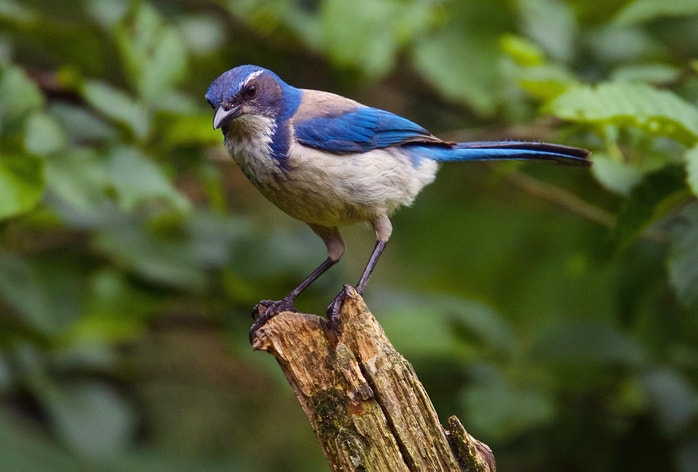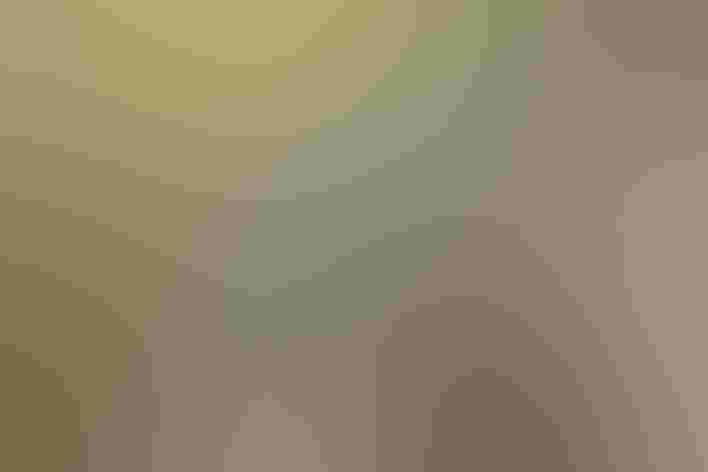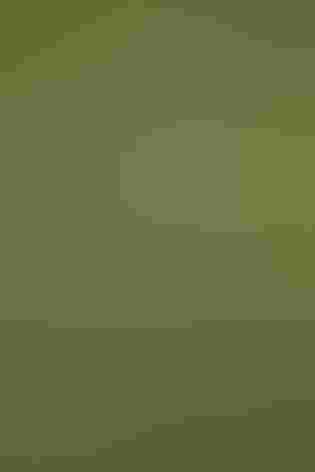California Scrub-Jay
At a Glance
This is the "blue jay" of parks, neighborhoods, and riverside woods near the Pacific Coast. Pairs of California Scrub-Jays are often seen swooping across clearings, giving harsh calls, with their long tails flopping in flight. They readily come to backyard bird feeders. Until recently, this jay was considered part of the same species as the Woodhouse's Scrub-Jay; the two were officially "split" in July 2016.
All bird guide text and rangemaps adapted from Lives of North American Birds by Kenn Kaufman© 1996, used by permission of Houghton Mifflin Harcourt Publishing Company. All rights reserved.
Category
Crows, Magpies, Jays, Perching Birds
IUCN Status
Least Concern
Habitat
Forests and Woodlands, Shrublands, Savannas, and Thickets, Urban and Suburban Habitats
Region
California
Behavior
Flap/Glide, Undulating
Population
1.600.000
Range & Identification
Migration & Range Maps
Mostly a permanent resident. May disperse some distance in winter, especially in dry years when the oaks produce poor acorn crops.
Description
11-13" (28-33 cm). White throat bordered by streaked necklace; gray back contrasts with blue head, wings, and tail.
Size
About the size of a Crow, About the size of a Robin
Color
Blue, Brown, Gray, White
Wing Shape
Broad, Rounded
Tail Shape
Long, Rounded, Wedge-shaped
Songs and Calls
Call is loud, throaty jayy? or jree? In flight, a long series of check-check-check notes.
Call Pattern
Flat, Rising
Call Type
Buzz, Rattle, Raucous, Trill
Habitat
Oak woodland, oak scrub, riverside woods, and foothill forests of pinyon pine. Often very common in well-wooded suburbs and parks.
Sign up for Audubon's newsletter to learn more about birds like the California Scrub-Jay
Behavior
Eggs
3-5, sometimes 2-7. Usually light green, spotted with olive or brown; sometimes paler gray or green with large reddish-brown spots. Incubation is by female, about 17-18 days. Male sometimes feeds female during incubation.
Young
Fed by both parents. Young leave the nest about 18-22 days after hatching, but are tended to and fed by the adults for at least another month. Typically one brood per year, occasionally two.
Feeding Behavior
Forages on the ground and in trees, singly or in family units during breeding season, sometimes in flocks at other seasons. Often harvests acorns and buries them, perhaps to retrieve them later.
Diet
Omnivorous. Diet varies with season. Eats a wide variety of insects, especially in summer, as well as a few spiders and snails. Moth caterpillars make up a major percentage of the items fed to the young. Winter diet may be mostly acorns and other seeds, nuts, and berries. Also eats some rodents, eggs and young of other birds, and small reptiles and amphibians.
Nesting
Unlike the Florida Scrub-Jay and Mexican Jay, this species breeds in isolated pairs, not cooperative flocks. Pairs typically stay together all year on their permanent territory. Nest site is in a shrub or tree, usually fairly low, 5-15’ above the ground, but sometimes higher. Nest (built by both sexes) is a well-built, thick-walled cup of twigs and grass, lined with rootlets and sometimes with animal hair.
Conservation
Conservation Status
Healthy population overall, and increasing in recent years in northern part of range.
Climate Threats Facing the California Scrub-Jay
Choose a temperature scenario below to see which threats will affect this species as warming increases. The same climate change-driven threats that put birds at risk will affect other wildlife and people, too.








